Category: Blog
-

Warranty on Elliptical Trainers
Ellipticals usually offer different warranties for parts, labor, and frame. Frames usually don’t break and hence come with longer warranty covers. Parts are “wear items” and are handed a shorter warranty for obvious reasons. Labor warranty spans for a medium to short period on most machines. To make things simple, let’s say there is a one-year warranty on the labour and three-years on the parts. This means the company will pay for any parts you have to replace in the first three years.However, they will only pay for the labour for replacing these parts for the first year. If your machine breaks down in year 2, they will pay for the parts but not for someone to fix it.Brands such as Schwinn offers 15 years warranty on the frame, but only 6 months on the parts. Spirit goes 4 years frame, 3 months parts, 1 year labor warranties. Sole gives lifetime on the frame, 3 years for parts and electronics, and 1 year for labor. These clearly convey a certain sense of quality on these machines. -
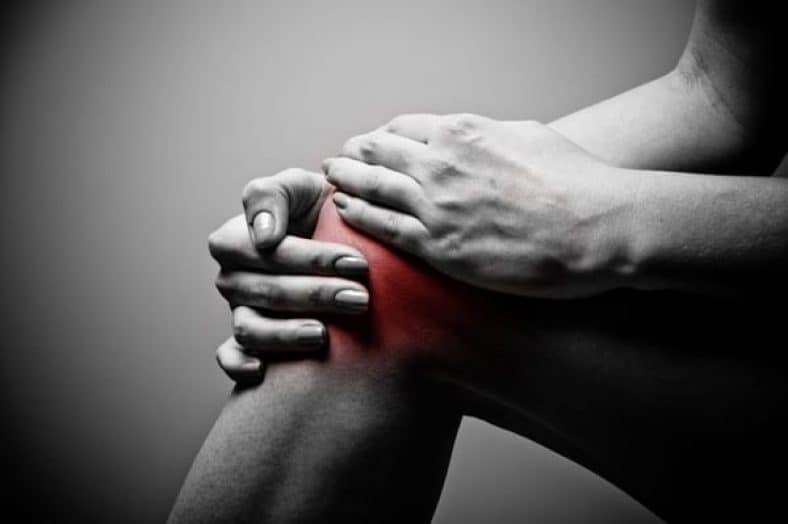
Knee Pain? No Way!
Find Out How Your Elliptical may Cause Knee Pain
Many users of the elliptical often claim that their knees are sore and weak after a workout. They also complain about discomfort in the feet in the workout process. This kind of pain is very common when using an elliptical and if you find yourself feeling that kind of pain as well, there are a few ways to fix it.
You Might Be Pushing Yourself Too Hard
Overall, you might be pushing yourself too hard when working out and that could be causing a lot of the pain you feel. Many people think that they can do 60 minutes on their elliptical twice a week and think they are getting a good workout. This is actually what causes that joint pain and can make your workout less enjoyable. For some people 60 minutes is doable, but it actually hurts the body, not helps it.
Instead of 60 minutes twice a week, try splitting it up and do only 30 minutes over four days. This will help lessen the chance of getting injured and it is definitely easier on your joints. The people who end up working out more than 30 minutes a day start to feel that pain. It would be a smart move to split things up so you are not taking on everything at once.
One of the most noticeable sensations to watch out for is a clicking feeling. If that occurs in your knees, tone it down on your workouts. The clicking sensation occurs when you put too much stress on your knees and it acts a huge red flag, telling you to slow down and workout less.
Your Machine Might Be At Fault
If you are sure you are not pushing yourself too hard in workouts, it might be your machine actually causing the joint and knee pain. Many machines are built cheaply with poor parts, which contributes to the increase of knee pain. Often, older machines that are starting to run down can cause you some kind of pain and it would be best to either hire someone to repair it or completely replace it for a newer one.
Also, some companies end up building their machines so that the pedals are spaced too far apart to get a good workout. Keeping the pedals far apart can seriously damage your knees and cause pain during your workout.
Aside from pedal separation, the degree at which the pedal is set can have some impact. When working on your elliptical, your heels should not lift away from the pedal. In a good workout, you aim to have full support from your pedals, not to balance on the balls of your feet. If angled correctly, the pedals will mold to your feet and help you in your workout, not go against you.
But if you get a good quality machine, the chances of having poor pedal angle and a large separation between pedals is unlikely.
It Might Be Your Body Alignment
Whether you want to admit it or not, your knee pain might be coming from the way you align your body while on your elliptical. People like it deny it, but most of their pain be self-induced and can be fixed by straightening up.
When working out on your elliptical, try to avoid hanging over the front console. This enforces bad posture and impacts your entire body, not just your knees. Hanging over the console has a lasting impact if you do it long enough and make it a habit.
Instead of hanging over the console, align your body properly and straighten up. Be sure to keep any part of your body from slumping and this will give you the best results.
Also, you might find yourself getting knee pain if you like to pedal using the balls of your feet. This is something to avoid doing, as it hurts your knees and other parts of your legs. Pedaling on just the balls of your feet will put a lot of unwanted stress on your knees.
Overall, these are the three main causes of knee and joint pain on an elliptical. If you feel yourself having a lot of lasting knee pain, put some of these solutions into effect because they might resolve your problems.
As long as you keep your machine in good shape and do not hang over the front console while working out, you probably will not have too much pain. If you still have knee pain, look into getting a better machine.
-
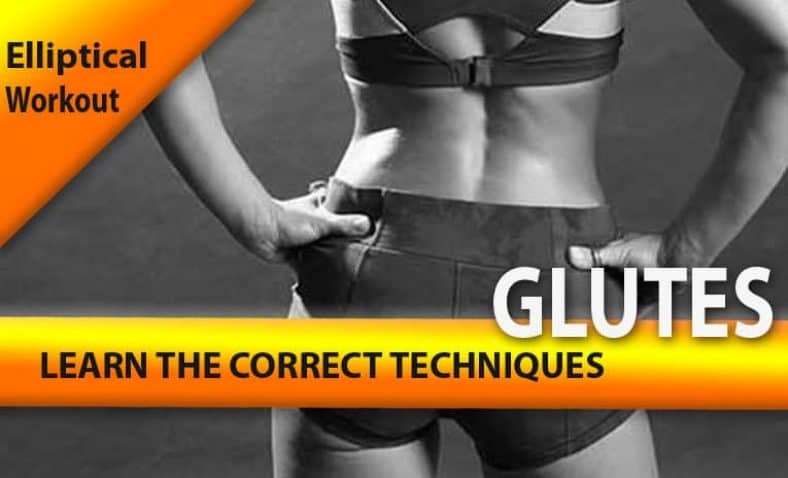
Elliptical Workouts – Glute Workout
An elliptical machine can transform your backside. Everyone wants strong glutes and an elliptical can help you achieve that fitness goal. Many turn to the traditional squat (which can be hard on the knees), head over to the Stairmaster or pedal away on the stationary bike but why not try something new? This high intensity interval workout is going to activate the gluteal muscles to help tone and tighten that area. Aside from the workout itself, your stance and positioning matters. First, you want to stick out your bottom much like you would do if performing a traditional squat. From that stance, shift most of your weight to your heels to make sure that you really activate the glute muscles and recruit as many muscle fibers as possible. This combined with the motion involved in elliptical training will help firm, shape and lift. This elliptical workout focuses on resistance, speed and duration. The resistance ensures that the muscles are challenged and the constant change in duration keeps the muscles confused to maximize results. Speed on the other hand adds to the intensity of the workout and gets your heart rate up.
Elliptical Glute Workout
*Remember to maintain a neutral grip on the handles. Activate your core to stabilize and keep your upper body straight. Shift your weight on your heels and make sure to move from one resistance level to the next without pause. Maintain your target speed throughout each interval.
Incline: Choose a higher incline that you feel comfortable with if applicable. Only some machines allow the incline to be adjusted.
- Duration: 30 Minutes
- Frequency: 3 times a week
- Exercise Type: Cardio
- Intensity: High
- Repetitions: 1
- Rest Period: 15 Minutes
- Energy Expenditure: 500 calories
[wpsm_colortable color=”orange”]
Phase Resistance Speed Duration Phase 1 Level: 3 Slow 4 minutes (Warm up) Phase 2 Level: 7 Fast 3 minutes Phase 3 Level: 5 Medium 5 minutes Phase 4 Level: 9 Fast 4 minutes Phase 5 Level: 4 Medium 6 minutes Phase 6 Level: 7 Fast 5 minutes Phase 7 Level: 3 Slow 3 minutes (Cool down) Total 30 Minutes [/wpsm_colortable]
Your glutes will be on fire after this workout. It is really intense but extremely effective. In addition to targeting the glutes this workout will strengthen your entire lower body, especially the quadriceps, hamstrings and calves. For this workout, try to use an elliptical machine that has an adjustable incline. Only the higher end machines have this feature but the steeper incline will greatly benefit this routine by adding intensity. More intensity equals better results!
-

Is the Elliptical the Best for Cardio Respiratory Fitness?
Here is the oldest question in the book: Which is better? The treadmill or the elliptical? Or maybe running will do the trick? Many people favor one, or two, or all three. It is really a personal preference, but there is a larger number of people who strongly prefer the elliptical over both the treadmill and running.
If you are trying to decide between a treadmill and an elliptical for your home gym, take a look at what we have compiled about the best elliptical trainer to help make your decision a little smoother. In most areas, ellipticals offer more than treadmills and can be better for your body.
Most elliptical machines are compared to different machines that claim to give you a great workout, like treadmills and others. Most people aim for a high quality, high cardio workout, and that is what you end up getting with an elliptical trainer. In terms of a cardio workout, the elliptical trainer raises your heart rate, works out most areas of your body, and leaves you breathing heavily by the end. This is what people look for in a machine, and this is what the elliptical trainer provides. Overall, the elliptical prevails.
The elliptical trainer also has many other features that make it preferable over other machines. First of all, you can change the level of intensity in an elliptical to find your perfect fit, thus proving that the elliptical is a perfect fit for everyone. That being said, you have the ability to change the intensity as your body strengthens. You can choose to go slow one day, then take it up a notch the next day and get a great workout. You have different levels of intensity to choose from, giving you more of a variety for your workout.
Most ellipticals are paired with handlebars, which help you work out your upper body as well as your lower body. Treadmills usually don’t have moving handlebars, so the points go to the elliptical trainer. The handlebars allow you to reach the muscles in your arms and back while you also workout your legs. They’re incredibly helpful in achieving that full body workout everyone strives for.
But while ellipticals have handlebars, it is important that you spend some time in your workout away from the handlebars. Not using them can help you improve your sense of balance and it can strengthen your core. With this, your abdominal muscles will work at being tighter and you also have a chance to improve your posture, which is important in exercise and in daily life. Having bad posture while you work out can lead to serious injuries and make working out – or other daily activities – feel uncomfortable.
Many ellipticals have consoles that contain pre-set programs, which opens up more variety for your workouts. These programs have different intensities, different workout lengths, and much more to help switch things up once in a while.
These consoles also have helpful tools, like calorie trackers and distance trackers to keep you informed while you work. Some are equipped with heart rate monitors and others can tell you what your fat burning zone is for a person of your weight and your height. These consoles can help make your workout a lot more enjoyable.
Most importantly, you can customize an elliptical trainer to fit your needs, whatever those needs may be. It’s important to set your elliptical at the right settings because your future workouts probably won’t be very comfortable if you don’t. Be sure you know what settings you are comfortable with, as they can make a world of a difference in the quality of your workout.
If you are looking for a decent workout machine that will give you the cardio session you need, look no further than the elliptical. Other exercise machines try to measure up, but ellipticals always seem to come out on top. They have dozens of pre-set workouts to help you get started and shake things up a little, and they are low impact machines, which means that they won’t apply too much pressure to your joints.
Ellipticals are perfect for anyone who is trying to get in shape, but doesn’t feel comfortable with running outside. Ellipticals can give you the same workout that running does, but within the comfort of your home and with more options.
In the end, everything is based on personal preference, but the elliptical is a strong candidate for those searching for a new way to exercise.
-
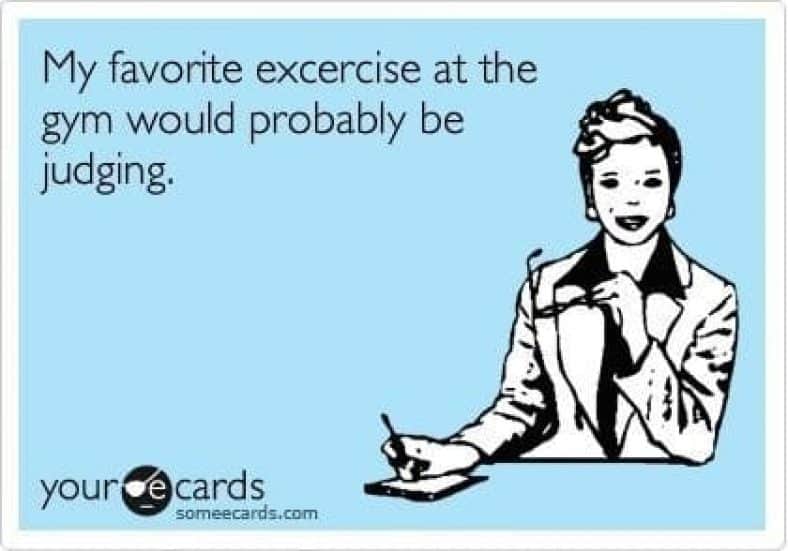
Why You’re Wrong by Not Using Low Impact Exercise Equipment
In today’s exercise world, low impact exercise equipment is on the rise and the demand for it continues to go up as more and more people learn about it. Why? Because this kind of equipment is desired by people who can’t seem to fit exercise into their schedule, have health problems, or do not want to have health problems later in life. This kind of equipment has caught fire and its popularity will certainly rise.
Why the Need for This Kind of Equipment?
High impact exercise is classified as exercise in which both of your feet leave the ground at the same time and works against gravity to strengthen the muscles. One of the most popular examples is running, as well as walking and playing specific sports. People usually have an aversion to high impact exercise because it does not fit into their schedules or it is too overwhelming. Plus, some people feel that high impact exercise does has a detrimental effect on the joints and wears them down early on, leading to health problems later on in life. Most people would like to have active, healthy joints when they are older, so they skip out on high impact exercise and choose low impact exercise. While high impact exercise does strengthen muscles, it also wears down the body.
Get Your Workout Through Machines
Once people have decided to skip out on high impact exercise, they usually search for low impact machines or exercises to carry out in order to keep in shape. There are hundreds of exercise equipment that fall under the low impact exercise category, but the most popular are stationary bikes, rowing machines, elliptical machines, and stair stepper machines. Most people choose these machines because they still give the body a bit of a workout and strengthen the muscles, but without all the wear and tear on joints. This is why these kinds of equipment are so popular. Here’s a rundown of each of the listed machines:
Stationary Bikes

These are just like regular bikes, but pedaling does not get the user anywhere. These are the oldest of the machines and are easily customizable to fit every need. You can change the resistance on the bike, depending if you want to push harder or not very much. Your workouts can go from relaxed to intense with a few clicks of a button, which makes the stationary bike a popular piece of equipment. While riding a stationary bike, your feet actually never leave the pedals, making it a low impact piece of equipment. While it still requires a bit of effort, it is one of the most popular pieces of equipment for people who would like to avoid high impact exercise.Rowing Machines

A rowing machine is actually what you think it sounds like. It is designed to mimic the feel and resistance of rowing through the water. It is one of the best machines that will give you a complete upper body workout, strengthening the muscles in the arms, chest, back, shoulders, and abdomen. Like the stationary bike, you can customize your workout by changing the resistance, giving you a variety of workout options. It is a low impact piece of equipment because your feet never move; they serve as anchors to keep you steady and never move out of place.

Elliptical Machines
Also widely known as cross trainers, elliptical machines are very popular, as they offer a wide range of styles and resistances. These machines mimic the motions of running, skiing, and climbing flights of stairs. Like the first two pieces of equipment, users can customize an elliptical to fit their needs. A workout can be as easy, or as hard, as a user wants. Elliptical machines are widely popular because can give users an intense cardio workout and exercise most muscles in the body, but the feet never leave the pedals of the machine. This is why it is popular and considered a low impact piece of equipment.
Stair Stepping Machines

If you climb stairs a lot, you know the feeling of raising your legs up and down until you get to the top of the staircase. Stair stepping machines are designed to stimulate the motions of climbing up the stairs. Using this machine heavily workouts out the muscles in the legs and backside, and though it hits joints a little harder than the other machines, people still use it to get a great cardio and fat-burning workout. It is still considered a low impact exercise machine because the feet do not leave the stair steps
Conclusion
Low impact exercise equipment has a high demand in today’s fitness world. Most people want a good workout and to strengthen their muscles, but they do not want the joint stiffness later on in life. With low impact equipment, pressure is still applied to the joints, but not as much as high impact equipment. They take off some of the stress you would experience with high impact exercise equipment while still giving you a good cardio workout. The pieces of equipment listed above do not completely eliminate wear and tear on joints, but they do reduce the stress and provide for a good workout. These are the most popular machines that are on the low impact market. If you are one of those people who want to get into shape, but want to give your joints a break, look into trying one of the machines listed above. They will give you a clean, strengthening workout with all the stress on the joints.
-
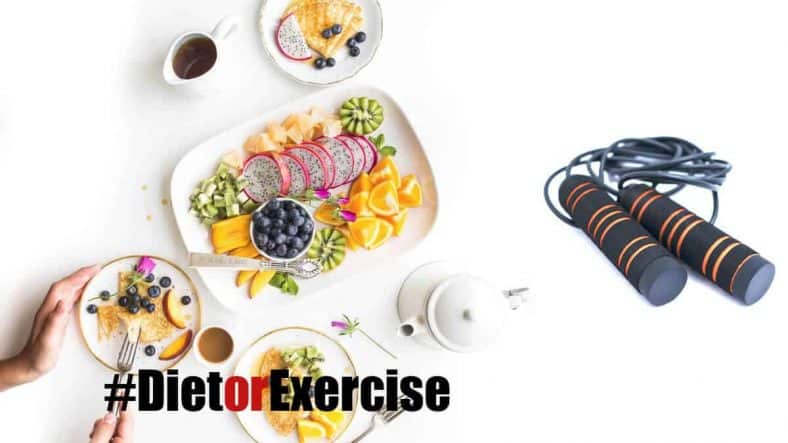
Diet or Exercise: What Comes First?
The million-dollar question pertaining to health and fitness is whether diet is more important than exercise or vice versa. The answer that is in everyone’s best interest is that a combination of both is best but you want a straight answer, correct? Well, the winner is diet. Yes, despite popular belief, you cannot eat junk and work hard in the gym to compensate for doing so. Below are 4 reasons why.
Nutrition Supports Weight Loss and Maintenance More Effectively
You know how everyone says abs begin in the kitchen? Well, that’s true for a slimmer body too. As said, if you eat junk and exercise, you’ll get little to no results but making the transition to a healthy diet will yield very impressive results. The best part is, doing so is simple. All you have to do is focus on the three macronutrients which are protein, carbohydrates, and fat. When creating meals, start with a protein. This can include:
- Chicken
- Salmon
- Lean beef
- Eggs
- Pork chops
- Tofu
- Tempeh
Next, you need a complex carb on your plate. Like protein, there are a lot of options including quinoa, whole grain rice, leafy greens, other vegetables, oats, beans, and legumes. Once that is done, round out your plate with some fat. You can use a healthy oil like olive or coconut for cooking, add nuts to your meal, seeds or some avocado. As a result, you will feel full, stay full, provide your body with tons of nutrients, and lose weight or maintain a healthy weight depending on the number of calories needed to support your goal.
Eating Well Increases Energy
Diet is also more important than exercise when it comes to energy. The three macronutrients discussed above are calories that fuel your body. Better yet, they provide a slow release rather than the quick boost and crash simple carbs offer. Although each gram of protein delivers 4 calories of energy (the same as carbs) complex carbohydrates and fat are the body’s preferred fuel sources. In addition to providing essential macronutrients, eating well delivers energizing micronutrients (vitamins and minerals). Although needed in small amounts, micros like magnesium help the body convert glucose into energy.
Food Drives Fitness
Speaking of energy, food is the fuel source that drives exercise. Without proper nutrition, effective exercise is impossible. Protein, energy from complex carbohydrates and healthy fats are needed to achieve fitness goals. Otherwise, performance is considerably compromised deeming the physical activity relatively pointless.
Chronic Disease Prevention
Although more effective together, diet comes before exercise when it comes to preventing chronic diseases like obesity, heart disease, and type 2 diabetes. The primary cause of these diseases is not a sedentary lifestyle. Of course, it is a contributor but what we eat either puts us on the right or wrong path. These diseases occur because of diets high in saturated fat, refined sugars, and all the convenient yet unhealthy processed foods out there with little to no nutrition value. Think about it this way. People fall into these poor dietary habits for whatever reason, these habits stick and before you know it, you’ve been depriving yourself of proper nutrition for years if not decades. This takes a toll and, in some cases, leads to serious disease.
-
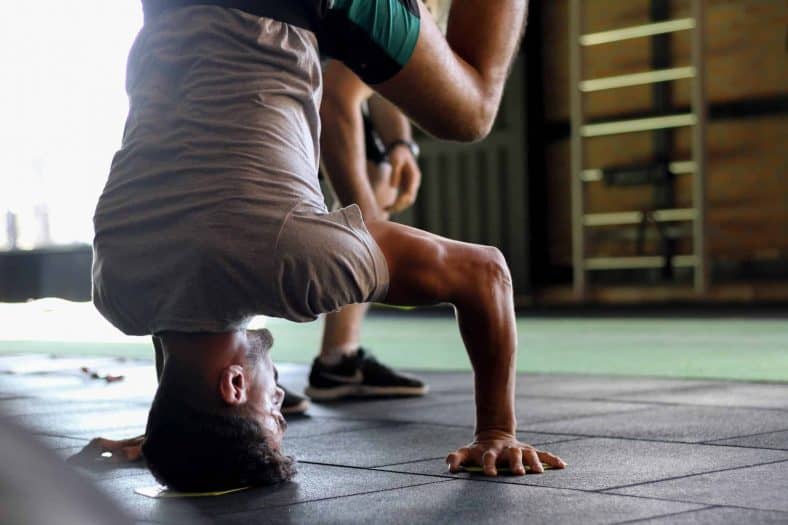
Where to Find Motivation: Intro to Fitness Motivation
To find fitness motivation, you must tap into your brain. You have to know how your brain works to find motivational sources that work. Individuals differ and what may motivate one may not motivate another since we are all driven by different things. Check out the suggestions on where to find motivation and see what clicks.
Online
Online is an excellent place to find fitness motivation. There are people just like you sharing their fitness journeys, progress and successes all over social media. Seeing similar individuals with similar goals achieve them and viewing their transformations is motivating and shows that you can do it too. You can also find motivational quotes and mantras online as well to provide the encouragement needed to follow through with your fitness plan every day.
Anger and Frustration
It may sound a little strange but using anger and frustration as fitness motivation is quite healthy and it works. Whether you had an argument with someone, traffic was terrible, work was a nightmare or you just had a bad day, hit the gym. Directing negative energy into something positive will motivate you to exercise more often because the body will crave that healthy release.
Classes
Exercise classes like cycling, yoga, and Pilates are not only motivating if you have an amazing instructor but they actually give you incentive to never skip a class. The source of this incentive is the entire set up of a class. Not only do you not want to miss anything (who wants to be left behind?) but a social aspect is thrown in the motivational mix. Chances are, you will make a few acquaintances after class and if you don’t show up, they are likely to ask why. Having somewhere to go and people to see will motivate you to show up which will benefit your progress. The addictive energy of a group will also keep you going.
Apps
Downloading the right fitness application can make workouts almost too fun to skip. Engagement is motivating because it keeps the brain interested and when that happens, the body keeps moving! Runners must try Zombies, Run! The overall idea is that you have to run to escape the zombie apocalypse. You get a little story, some narration, and a workout all in one. The best part is definitely the missions. The missions in the application give every run an objective. Working harder and getting in better shape all while advancing in one very fun game is motivation at its finest! You also have to try NexTrack. This app allows users to earn points by working out and users can use those points to earn rewards like gift cards. Who else will reward you for your fitness efforts?
YOU
Lastly, remember that all the motivation you need is inside you. Set goals that are important to you, understand those goals and remind yourself why you are working so hard when your motivation needs a boost.
-

Types of High Intensity Interval Training: HIIT 101
High intensity interval training is one training technique but there are three forms. These include turbulence, Tabata and power intervals. The focus of turbulence training is fat loss and lean mass while Tabata delivers a 4-minute workout and power intervals focus on strength, power and endurance. All are completely customizable but deliver HIIT in their own unique way in addition to offering a structure all their own. Let’s delve deeper into these forms of high intensity interval training.
Turbulence Training
This type of HIIT is all about fat loss. If you have stubborn fat that you just can’t get rid of, say hello to turbulence training! This form of high intensity interval training continuously applies turbulence to the muscles to increase the amount of energy the body uses (which will be in the form of calories and fat). This is done with compound exercises like squats and intervals of body weight exercises like pushups (all of which are metabolic resistance training exercises). These are then followed by cardio paced intervals. For example, you will start by warming up with bodyweight exercises followed by 15-20 minutes of total body strength training done in supersets with a weight that does not allow more than 8 reps. After the strength training portion, you will perform a cardio warm up before moving on to 5-6 one minute intervals of cardio paced training with alternating 60 second recovery intervals. The workout then ends with a cool down and you’re done. With this form of HIIT, it is recommended that you change your routine every 3-4 weeks and gradually increase the weight used during the total body strength training portion of the workout.
Tabata Training
Tabata training sessions last a mere 4 minutes but the work output involved makes up for the lack of duration. This form of HIIT, discovered by Japanese scientist Dr. Izumi Tabata and researchers, uses 30 second circuits (20 seconds of work and 10 seconds of rest) to improve a person’s physical fitness level, promote fat loss and develop lean muscle mass. Like all forms of high intensity interval training, a variety of exercises can be done in Tabata training including bodyweight, weighted and cardio moves. Exercise selections should be based on your personal fitness goals.
The structure of Tabata is very simple. As stated previously, it involves 30 second circuits. Within the 4 minutes, eight of these circuits are completed. A Tabata session begins with a warm up (not part of the 4 minutes) followed by 20 seconds of the exercise of your choosing, ten seconds of rest and then the process is repeated until all circuits are complete. After the eighth circuit, a cool down is recommended.
Power Intervals
Power intervals are about power, strength and muscle endurance. The sole purpose is to increase the body’s ability to sustain its VO2 max power output. This is done by maintaining a higher power output for an extended period of time during training. Power intervals involve cardiovascular activities like running, cycling, rowing, and explosive moves like jump squats. For the best results, each interval should be composed of 90 seconds of work, 30 seconds of rest and total workout duration can be anywhere from 4 to 30 minutes. During those 90 seconds of work you want to go as hard as you can to get your heart rate up. As the heart rate increases, more oxygen is delivered to the body and when that oxygen level remains constant, that is your VO2 max. With regular training that number will increase along with the amount of power you can produce while maintaining this constant level of oxygen.
-
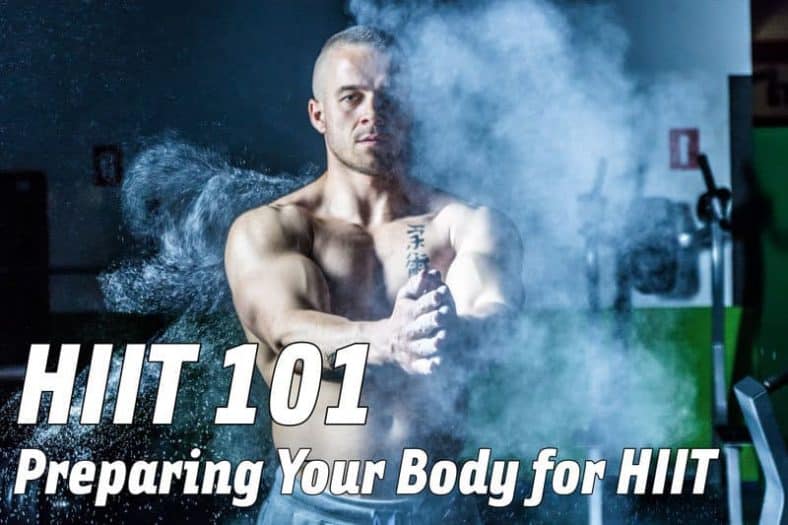
Preparing Your Body for HIIT
High intensity interval training is serious exercise so you must prepare your body for the work ahead. The way to do that is with proper nutrition. Without the right fuel, your body is just going to give out before you reach the halfway mark. Unfortunately, very few know how to eat for HIIT. To make sure you are eating well all you have to do is commit to following a clean diet. Clean eating means basing your diet solely on fresh, whole foods and omitting processed junk. This means tons of fruit and vegetables, lean meats like chicken, turkey and fish, as well as complex carbohydrates and dairy in moderation.
Macros Matter
In addition to eating clean, you have to watch your macros (macronutrients). For those that do not know, macronutrients are protein, carbohydrates and fat. They are the body’s primary sources of fuel and determine how much progress you make in the gym and whether or not you can handle an intense workout. They also play a huge role in recovery which is just as, if not more, important than the workout itself. A 40-40-20 split works for most. This means 40% of your diet is protein, 40% consists of carbohydrates and 20% is healthy fat.
Protein
Protein is extremely helpful for those that do HIIT because it delivers amino acids to the muscles and provides energy. Having enough protein in your diet will give you the energy to power through intense workouts. Protein is slow digesting meaning it breaks down gradually and provides a steady flow of fuel. Protein also benefits recovery. After muscles are used, they are hungry for amino acids, the building blocks of muscle tissue. When you consume enough protein, those amino acids cause muscles to become bigger, stronger and more resilient in a shorter time frame. Faster recovery equals faster results. Along with eating your protein you may want to consider supplementing. A protein shake before or after a workout is suggested.
Carbohydrates
Carbs are also really important. Some think that going on a low carb diet and doing tons of high intensity interval training is going to cause them to drop weight fast but that approach is risky. One major risk is forcing your body into a catabolic state meaning muscle breakdown. You see, the glucose you get from carbs is the body’s main source of energy during HIIT as well as other types of exercise. Glucose keeps you working at an intense level during training and when there is not enough, the body goes into your fat stores and then begins to break down muscle tissue to turn those amino acids into glucose for energy resulting in a loss of muscle. The last thing you ever want to lose is muscle! Carbs do not make you fat, consuming more calories than you burn does. Stick with complex carbs, eat enough of them and enjoy the way you are able to perform.
Fat
You need fat too. Rather than going for the cake, ice cream and pizza, you need to get your fat from avocados, olive oil, coconut oil, nuts, seeds and fatty fish. The bottom line is; you need fat to lose fat. The reason for this is the fact that fat is the body’s secondary source of fuel. When your cardio stores deplete, the fat comes in as your backup.
-
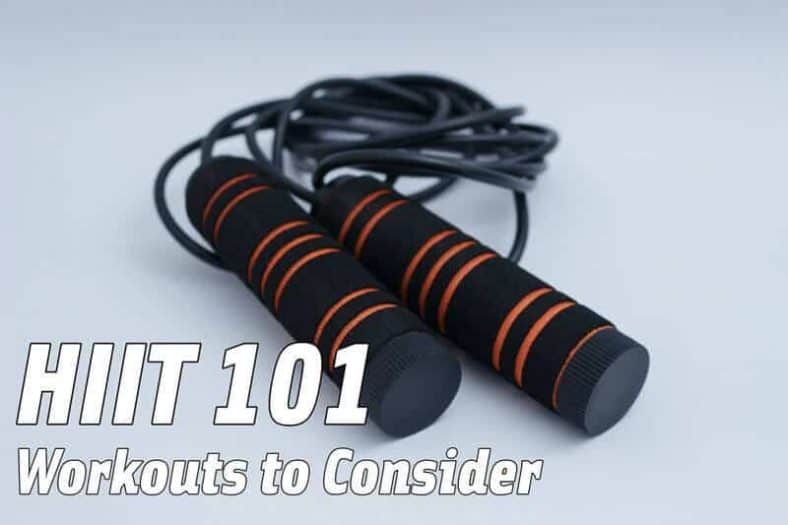
Workouts to Consider | HIIT 101
At this point you are probably saying, “HIIT sounds great but I could still use a workout or two to get started”. Understanding the structure of a training technique and developing a workout of your own are two completely different things. It is always helpful to have a few starter workouts that will get your training off to a good start and serve as a template for new workouts once it’s time to change things up.
Below you will find one workout for each form of high intensity interval training. Before trying the following workouts, keep in mind that knowledge and body awareness is extremely important. You must pay close attention to your form and technique while performing each exercise. If you are not sure how to perform an exercise the correct way, all you have to do is take a minute to look it up and try it out. Knowledge is everything. Knowledge also includes being aware of your physical limitations. This training technique leaves a lot of room for progress so don’t hesitate to stop mid-way if your body tells you to. As your stamina, endurance and strength improves, you will be able to do more. Lastly, if you have any preexisting medical conditions, check with your doctor prior to starting any exercise program.
Turbulence Training
Warm up: Select three of the following and perform 8 reps per exercise. Repeat twice.
- Plank
- Push-up
- Body weight squat
- Split squat
- Glute bridge
- Reverse lunge
Strength training: 15-20 minutes total of the following at maximum intensity. Perform at least two sets of each.
- Barbell row
- Deadlift
Rest for 1 minute
- Push up
- Barbell/dumbbell squat
* For the above, use a weight that allows no more than 8 reps.
Warm up: Cardio of choice for 5 minutes.
Interval training: 5 to 6 one minute intervals done at a cardio pace with alternating one-minute recovery interval done at a very easy pace.
Exercise options for these intervals include:
- Mountain climbers
- Prisoner squats
- Push-ups
- Kettlebell swings
- Jumping jacks
- Rows
- Sit-ups
- Jackknife sit-ups
Cool down (approximately 5 minutes)
Tabata Training
* Repeat the following 2 times for a total of 8 circuits.
Warm up: jog, brisk walk, run, jumping jacks, etc.
Burpees – 20 seconds at maximum intensity and 10 seconds of rest
Jump Squats – 20 seconds at maximum intensity with 10 seconds of rest
Dumbbell Bicep Curls – 20 seconds at maximum intensity with 10 seconds of rest
Bicycle Crunches – 20 seconds at maximum intensity with 10 seconds of rest
Cool down: jog, brisk walk, run, jumping jacks, etc.
Power Intervals
* One set is 90 seconds of work and 30 seconds of rest.
Workout 1:
- 2 sets mountain climbers (4 minutes)
- 2 sets jump squats (4 minutes)
- 4 sets sprinting (8 minutes)
Workout 2:
- 5 sets cycling (10 minutes)
Workout 3:
- 3 sets high knees (6 minutes)
- 2 sets tap ups (4 minutes)
The workouts provided are excellent introductions to each form of high intensity interval training. The best part is, they make it easy to change up your routine. With any type of training it is important to switch things up every few weeks or so.
-
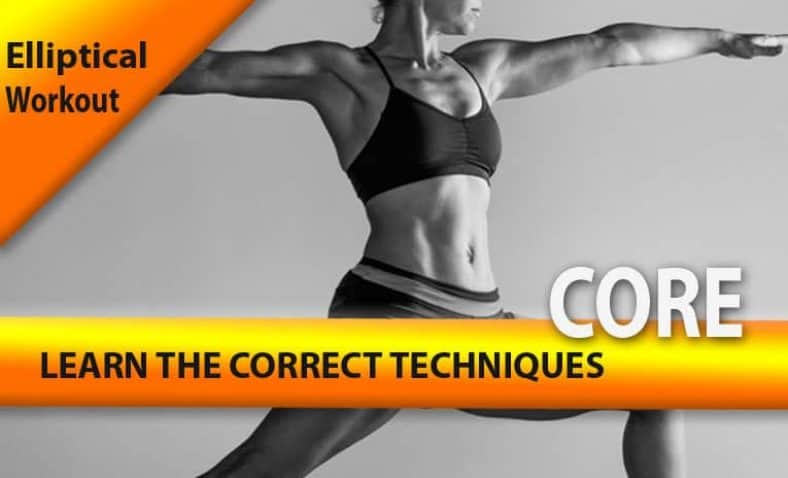
Elliptical Core Workout
Today’s let’s talk about the core. By letting go of the handles, adjusting resistance levels and getting the incline just right, you can enjoy a workout that combines cardio and muscle building stability training. Letting go makes the body work considerably harder. As a result, the core along with the abdominals are put to work because they must stabilize the body. The amount of resistance also plays a major role because resistance increases your Rate of Perceived Exertion (RPE) which is a scale used to measure the intensity of exercise.
Check out the 35 minute workout below and enjoy all the good it will do for your midsection. Nothing beats a solid core and strong abdominals.
*Remember to keep your hands away from the handles throughout the entire workout. Use your core to maintain your balance. Make sure to move from one resistance level to the next without pause and maintain a medium pace.
- Duration: 35 Minutes
- Frequency: 3 times a week
- Exercise Type: Cardio
- Intensity: High
- Repetitions: 1
- Rest Period: 15 Minutes
- Energy Expenditure: 500 calories
- Incline Setting: 8 (if applicable)
[wpsm_colortable color=”orange”]
Phase Resistance Speed Duration Phase 1 Level: 2 Medium 5 minutes (Warm up) Phase 2 Level: 8 Medium 5 minutes Phase 3 Level: 6 Medium 5 minutes Phase 4 Level: 9 Medium 5 minutes Phase 5 Level: 5 Medium 5 minutes Phase 6 Level: 10 Medium 5 minutes Phase 7 Level: 2 Medium 5 minutes (Cool down) Total 35 Minutes [/wpsm_colortable]
This workout is amazing! Changing the amount of resistance used on that incline causes a lot of muscle confusion. A different rate of perceived exertion every five minutes is great because it surprises the body and causes it to move in a different way to increase muscle activation. Because of this increase in muscle activation the body has to adapt to these changes and that adaptation improves strength and also gives your metabolism a boost. It is quite similar to circuit training. This workout may present a challenge at first so do your best to push through. Once it is no longer difficult, increase your speed to keep building on your progress. Doing so is going to up the intensity even more and increase the amount of fat burned. With an elliptical core workout you get the best of both worlds. Nothing beats cardio and strength training in one workout.
-

Pushing Past Your Limits: HIIT 101
High intensity interval training (HIIT) is a training technique that uses short, maximum intensity bouts of exercise to build muscle, burn fat and increase endurance. It is essentially an all in one training method that just about anyone can benefit from as long as they are willing to put in the work and are in good health. Rather than completing exercises at a moderate intensity, HIIT involves maximum effort sets done within a short time frame with alternating rest periods (often 30 seconds or less). Although a structured training technique, it allows a lot of variety for consistent progression.
HIIT is certainly an intense way to train (every session is sure to wipe you out in the best way possible) but the benefits are worth it. A major benefit of high intensity interval training are the results. Once you get started, you will literally feel the difference and see it soon enough. Since this technique consistently pushes you past your limit, results are achieved much faster in the form of gains, strength, fat loss and level of endurance meaning a more powerful body. In addition to faster results, HIIT saves time. Rather than spending an hour or more working out, you can maximize results with a quick 15 to 45-minute training session. Another huge plus of this training technique is variety. It is perfect for those that tend to get bored with their routine since it is fast paced with endless possibilities. High intensity interval training makes it easy to weight train and do cardiovascular exercise in a single session. You can perform sets of squats, deadlifts, curls and/or rows with burpees, planks and sit ups for a full body workout minus the time.
To give you a better idea of what HIIT is, consider this; instead of performing your usual long duration cardiovascular routine or doing 10 sets of lifts with 1 to 1 ½ minute rests in between, you will do 90 seconds of intense training, whether it is in the form of lifting or high intensity exercises like jump squats or sprinting, followed by 30 seconds of rest and repeated with the moves of your choosing until completion.
The advantages of doing HIIT are endless but there are cons as well. A major one is an increased risk of injury. Fortunately, this risk decreases considerably if you are generally fit and maintain proper form while performing each exercise. Lastly and obviously, high intensity interval training is strenuous. You do have to push yourself during these sessions but that is how progress is made after all!
